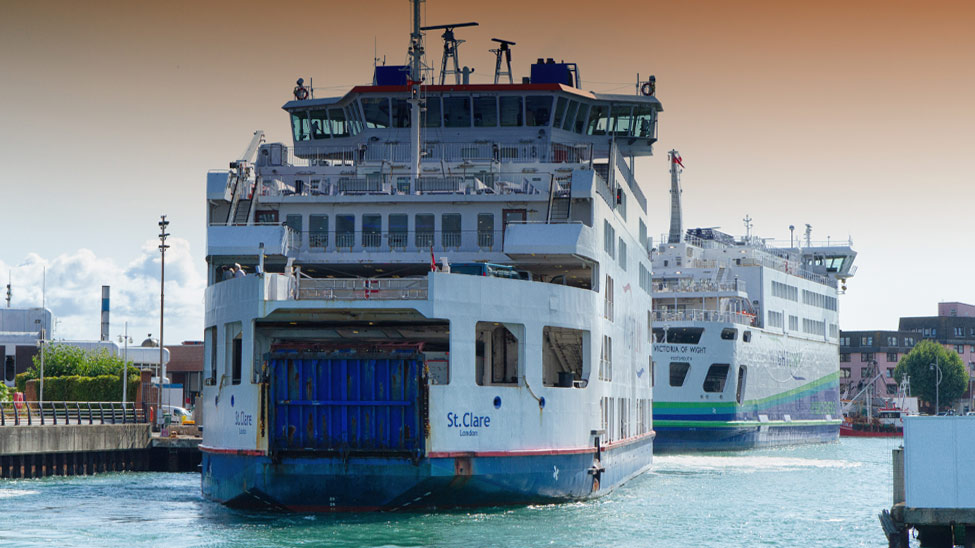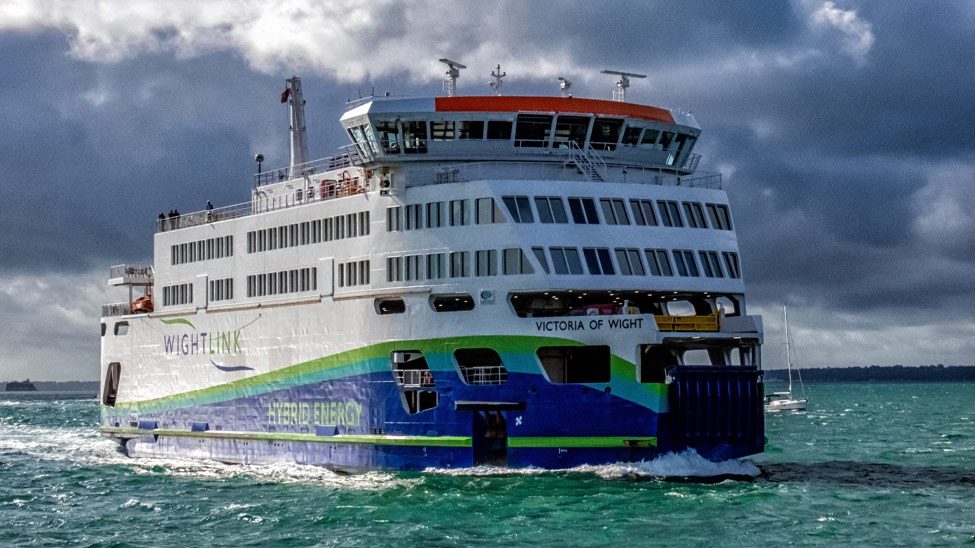By
Justin Merrigan |
Katy Taylor’s appointment as chief executive of Wightlink in summer 2024 came at a critical juncture in the ferry operator’s long history. Stepping into the role, Taylor is spearheading an ambitious transformation aimed at addressing the challenges of the future, including decarbonising the fleet and shore facilities to meet net zero targets, while strengthening the company’s deep-rooted ties with local communities.
Wightlink’s legacy as a vital lifeline for the Isle of Wight is undeniable. The company’s eight ferries provide services on three routes across the Solent and in 2024, it carried 4.3 million passengers between the island and the south coast of England. Despite its rich heritage, Wightlink is focused on a future where sustainability and innovation are the driving forces behind its strategic vision.
“Since joining Wightlink, one of the highlights has been engaging directly with both colleagues and customers at ports and onboard our vessels to better understand our operations and explore ways to enhance our service,” says Taylor. “Our vehicle ferries connect Portsmouth with Fishbourne, and Lymington in the New Forest with Yarmouth, while our foot passenger FastCats take just 22 minutes to speed between Portsmouth Harbour railway station and our 200-year-old listed pier in Ryde on the island. Our routes are integral to the island’s connectivity.”

Two of Wightlink’s eight ferries, which transported 4.3 million passengers between the Isle of Wight and England in 2024
However, Taylor acknowledges the significant challenges the company faces. Post-pandemic, the Isle of Wight has seen a decline in the number of visitors, coupled with reduced spending from tourists. As tourism represents 35 per cent of the island’s economy, Taylor is actively collaborating with local attractions and accommodation providers to bolster the tourism sector. “I’m pleased to have joined the Isle of Wight Chamber of Commerce as a board director, where I’m working alongside others to support and revitalise the island’s economy,” says Taylor.
Simultaneously, Taylor is focused on fostering skills development within the Wightlink team and enhancing the overall customer experience. This includes modernising the company’s infrastructure. Over the winter, Wightlink made key upgrades, such as replacing old fenders at Gunwharf terminal and resurfacing marshalling areas, temporarily relocating ferries to Portsmouth International Port while works were completed. The company also carried out significant improvements at Ryde Pier, upgrading waiting areas and customer facilities.
Though Taylor is new to the maritime industry, she understands the importance of continual investment in both the fleet and infrastructure. Six years after introducing the UK’s first large hybrid ferry, Victoria of Wight, Wightlink is now preparing to replace its oldest vessel, St Faith.
“We’re planning another hybrid vessel, featuring more powerful batteries and fewer conventional engines, but our ultimate goal is to build all-electric ferries,” says Taylor. “We’re already working closely with electricity network providers to ensure we can secure enough grid capacity to recharge ship batteries in just 20 minutes.”

Victoria of Wight was the first large hybrid ferry in the UK when it launched in 2019
The company is also committed to reducing its environmental footprint across all operations, explains Taylor. “In addition to the fleet upgrades, we’re expanding solar panel installations wherever possible, as well as increasing the number of electric vehicle chargers at our terminals.”
Innovation is a key tenet of Wightlink’s ethos. “We’re constantly looking for ways to evolve and enhance our services,” says Taylor. “We’re also exploring how artificial intelligence can improve operational efficiency and enhance the customer experience.”
Achieving these goals while balancing the needs of customers, colleagues, shareholders and local communities will be no small feat, but Taylor is resolute. “I’m proud to be part of Wightlink’s long history and excited about the opportunities that lie ahead. My goal is to build on that legacy, delivering a service that is not only more sustainable but also better suited to the needs of the future.”
Discover more insights like this in the Spring/Summer 2025 issue of Cruise & Ferry Review. Don’t miss out – subscribe for FREE and get the next issue delivered straight to your inbox.